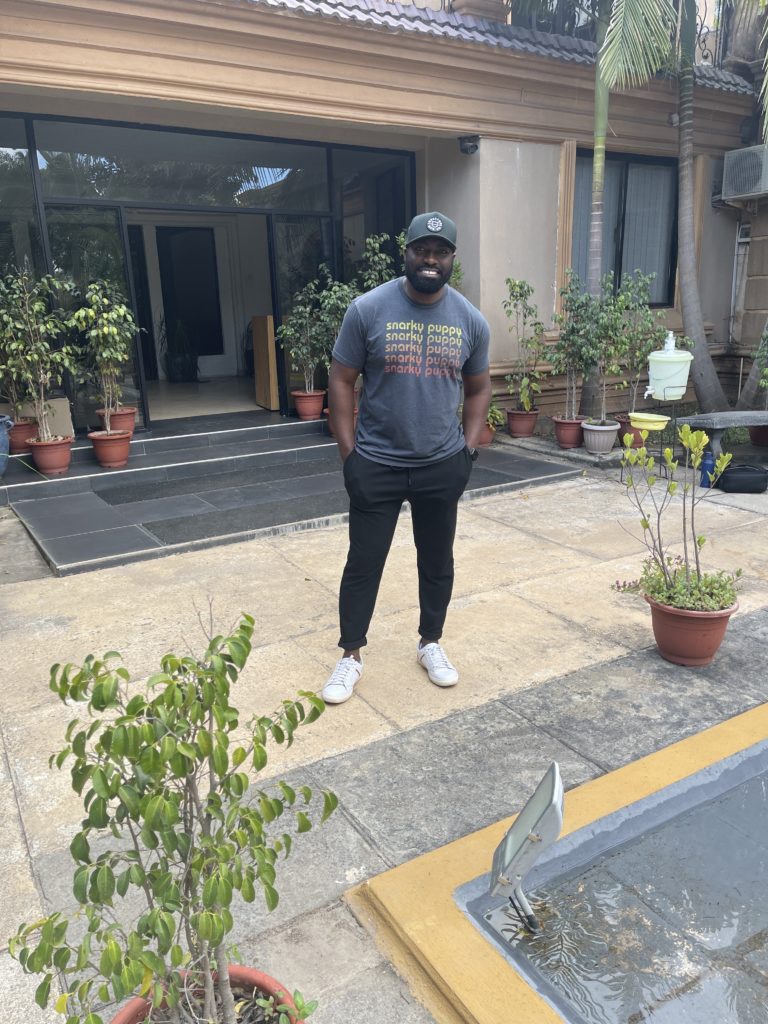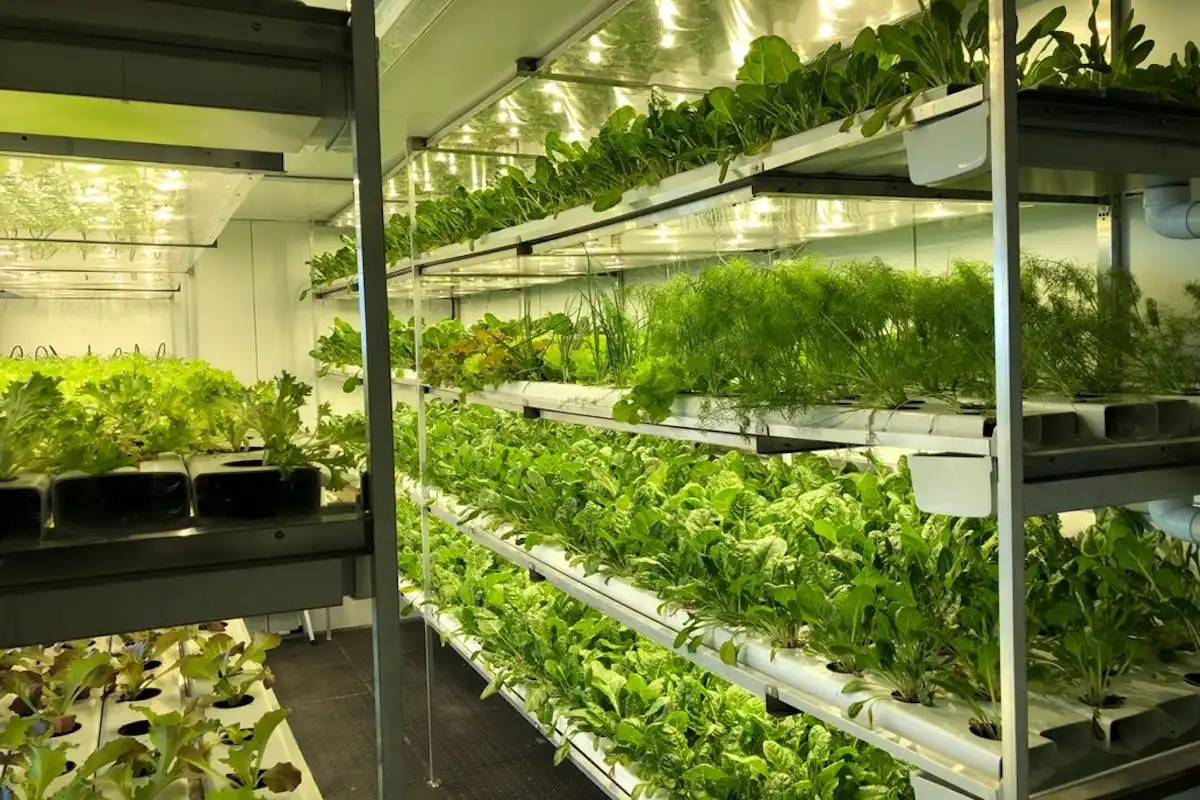A small idea born in the Microsoft Redmond campus in Seattle, Washington, has grown to become a full-blown digital farm marketplace in Zambia.
Between September 2017 and August 2021, Chris Chileshe, a Zambian-American, worked as a software engineer at Microsoft in its Redmond campus, where he got exposed to sophisticated urban farming. The Microsoft campus has approximately 50,000 employees, with over 100 buildings. Each building has its own café and aeroponic and hydroponic gardens growing fresh vegetables used in the campus’s kitchen and salad bars.
Chileshe, as an employee, had the privilege of touring these gardens and investigating the technology involved in hydroponic farming. Automated cultivation machines called urban cultivators are used in the farm. The watering, light cycles, and ventilation system are all automated and can be controlled via a screen. The commercial-scale machines are said to be capable of producing 16 trays of microgreens (young seedlings of edible vegetables and herbs planted very close to home or the kitchen) at a time, and can go from seed to harvest in as little as 8 days. Growing produce inside can help reduce pest pressures, so the produce is grown without using any chemical pesticides or herbicides. The microgreens grown are 100% organic, nurtured with 100% organic compost, and grown with organic seeds.
These tours would eventually inspire Chileshe to start Aiponics, an aquaponic and hydroponic farming startup based in Zambia.
“The team spent a year researching and learning about the various techniques involved in conditioning and maintaining an aquaponics ecosystem,” Chileshe told TechCabal in an email.
He also said that since launching the company, Aiponics has successfully proven its own aquaponic prototype by developing a back-garden system that fits in a 40-foot shipping container.
A pivot in time saves the day
But as impressive as this may sound, there was a problem: the production cost outweighed the reward. There was a need for business change. Should the company shut down operations, continue the line while booking losses, or pivot into something light on cost and heavy on revenue? The company went for the third option and built HRVST, a digital farm marketplace where people can order farm produce directly from the farmer.
“After building the container farm prototype and performing a cost analysis, the team decided to temporarily pivot from manufacturing containers due to how capital-intensive it would be,” said Chileshe. “We focused on building the digital marketplace where the demand could be derived. This would allow Aiponics to establish the marketplace where the container farms would plug in to address supply shortages in certain regions.”
HRVST allows farmers to list their produce and sell directly to end-users and restaurants, making it easier and more affordable for buyers and sellers. The platform has different functionalities tailored to support each end-user’s needs. For instance, on the vendors’ or farmers’ side, the app includes integrated point-of-sale features to facilitate cashless transactions using mobile money and credit card payments, performance analytics, order management, and fleet management. On the side of the drivers who help in making fulfilment of orders, there are assigned orders, route optimisation, and delivery completion validation. Then the customers who are on the app to shop can order fresh food from an array of farmers to be delivered or picked up at designated locations. They can schedule future orders and explore nutritional benefits of foods listed.

HRVST was launched into the market this month, and according to a statement the company shared with TechCabal on launch, the 1-week old startup already boasts 79 restaurant partners across Lusaka, Zambia’s capital city, and hundreds of early-access users registered and already getting served by over 20 small- and large-scale farmers, who are a half of the Zambian population and, surprisingly, a decent backbone of Zambia’s economy.
Agritech in Zambia is still heavily hardware-focused
The agricultural sector, though only contributing about 8.2% to Zambia’s GDP, accounts for employing almost half of the country’s population. And the government and various investors continue to throw their weights behind the sector. However, little has been done in using software to solve most of the sector’s problems. Hardware has been the centre of its technology.
For example, between April 7–9, the 7th edition of Zambia’s biggest agriculture technology event, Agritech Expo Zambia, organised by the Zambia National Farmers Union, took place. Due to its affiliation with the apex farmers association in Zambia, the event website said it promotes the interests of over 600,000 farmers across Zambia and pulls in over 15,000 stakeholders including farmers, agriculture small businesses and corporate companies, financial institutions, investors, and government officials.
While this event hosted the big names in the Zambian and African agriculture industry, agriculture software companies were scantily represented. Lima Link was one of the only notable product-led startups in the event and thus hinted at how almost non-existent or, better put, unrecognised this part of tech is in Zambia, one of Africa’s biggest agricultural nations.
HRVST will be joining a host of other small upstart building software to make agricultural prosperity easily accessible to farmers across the region. The platform is currently only available in Zambia but plans to extend into 5 new countries—Kenya, Tanzania, Angola, the Democratic Republic of Congo, and South Africa.
“With many parts of Africa facing a food crisis and the inherent risk of relying on other nations for food security, there has never been a better time to bring innovation and technology into a space that sorely needs it,” Chileshe said. “We’re focused on creating hyper-local capacity for food security while increasing the quality and diversity of the food available to every person on the continent.”
HRVST makes money by charging a subscription fee and a transaction fee to vendors. “We feel this model allows us to have a shared success model with our vendors. We are highly incentivised to see them succeed and further incentivise our vendors by lowering the percentage transaction fee as their sales grow,” he said.
While the new ambition to scale HRVST across the region is overarching, the idea that was born out of Redmond hasn’t died. Chileshe told TechCabal that “beyond the digital marketplace, Aiponics will soon continue to build a container-based aquaponic farm franchise model where the team would train local marketers and young farmers in aquaponics to create additional local capacity and empower more people to get out of poverty.”











